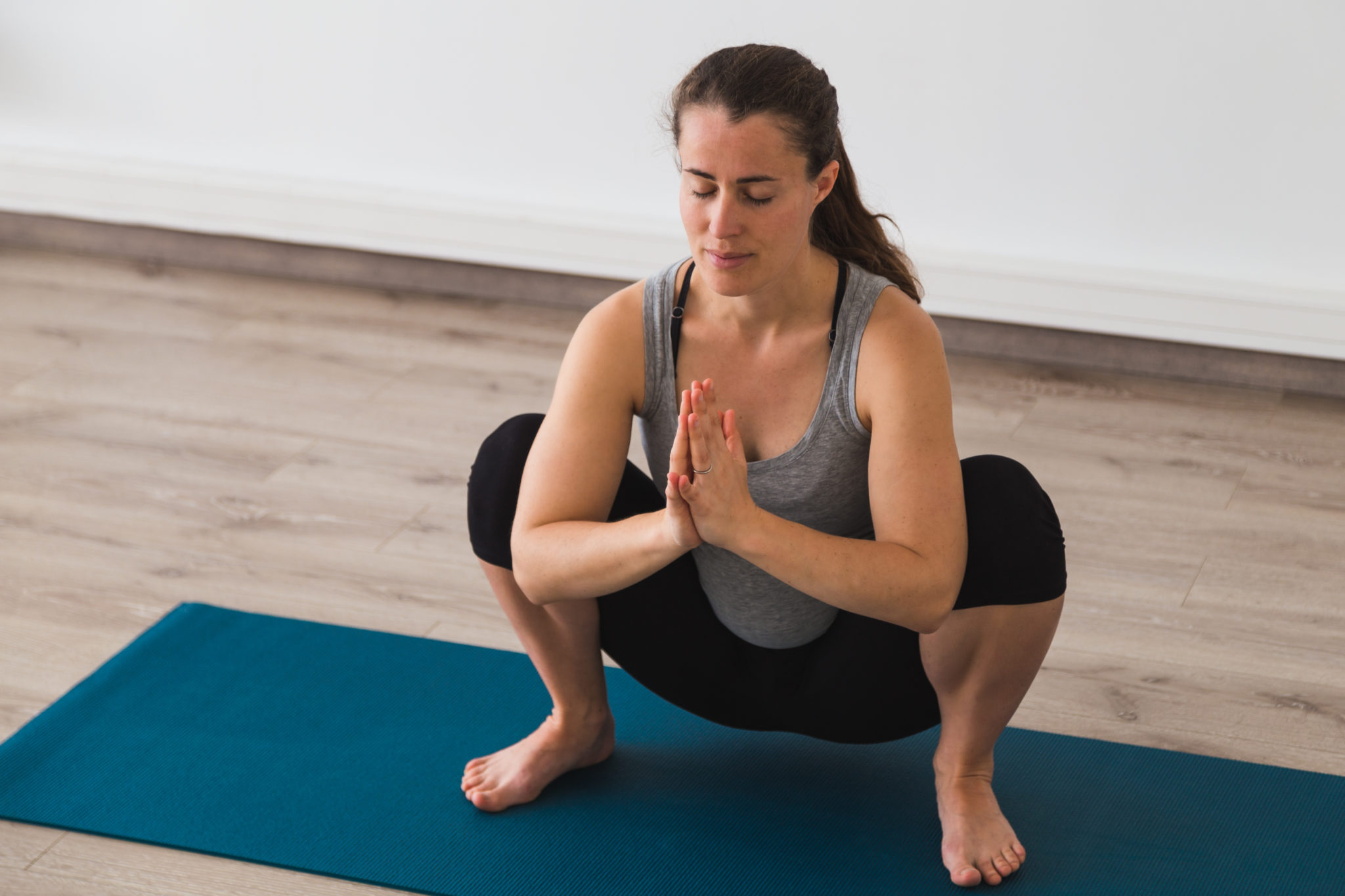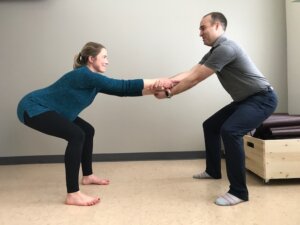 You’ve probably never thought about it, but we’re all most comfortable in a home with a straight floor, because a sagging, crooked floor could tip us over while walking or sitting, right? Well, just like your home floor, balance in your pelvic floor improves your whole body alignment. And ultimately, alignment equals comfort and ease during pregnancy and birth.
You’ve probably never thought about it, but we’re all most comfortable in a home with a straight floor, because a sagging, crooked floor could tip us over while walking or sitting, right? Well, just like your home floor, balance in your pelvic floor improves your whole body alignment. And ultimately, alignment equals comfort and ease during pregnancy and birth.
This page contains affiliate links, through which we receive a small commission.
Fetal positioning starts now. Aligning and balancing your pelvic floor anatomy now means your baby will have a symmetrical setting from which to curl and move into a good birth position.
This is a BIG topic — more important than most of us realize — so in this age of quick-hitting reads, we are (gasp!) giving the pelvic floor the space it deserves. We invite you to set aside time to read through our entire pelvic floor primer, and we promise to make next week a short one!
The bony pelvis holds within it the soft tissue pelvis, which is made up of both the pelvic floor and the uterine and pelvic ligaments. The soft tissue pelvis is in balance when it is not too tight, not too loose, and not too twisty. This helps the joints in the bony pelvis move without pain.
Pelvic floor exercise is commonly recommended during pregnancy and postpartum. It’s a specific method of awakening and strengthening the muscles circling the vagina. These muscles are often collectively called the pelvic floor.
Rather than focusing on strength alone, we want to add flexibility for a living suppleness — much like the phrase, “the supple willow bends, but the mighty oak breaks.”
Support your pelvic floor from front to back with these four exercises:
Download and print this quick guide to use all month or throughout the rest of your pregnancy. If you want to geek out with Spinning Babies® and learn more about each exercise, read on.
Katy Bowman of Nutritious Movement introduced me to the calf stretch. This humble stretch prepares your muscles for the squats you’ll begin in two weeks (20 Weeks). Hop over to Katy’s website for a deep dive into why calf stretches matter. In short, she explains that calf stretches “impact everything from the tips of your toes to the top of your head.”
Kegels need the Seated Ball Squeeze for best balancing.
“Kegels” are repeated, rhythmic contractions of the pelvic floor muscles around the vagina. They’ve been recommended to help reduce or prevent the uterus from slipping down into the vagina (prolapse), to stop urinary incontinence or involuntary peeing, and to increase or improve sexual pleasure.
Spinning Babies® doesn’t see the Kegel as the most important exercise, however. For pelvic stability and control, squats and ball squeezes are essential additions. Five to 25 Kegels is better than 50-100 Kegels or more. There is some extreme advice out there! Relax your pelvic floor muscles deeply after contracting them.
After birth, Penny Simkin recommends doing a super-Kegel (20 seconds long), only if the pelvic floor is lax, with every diaper change to ensure plenty of practice. (You know your pelvic floor is lax if you leak urine.)
Here’s good information with illustrations from the Parent Resource Network. See more about pelvic floor health at AprilBolding.com.
Ball Squeezes
Balance your Kegels with ball squeezes (see Week 15’s Spinning Babies® Activity of the Week). This simple exercise works the inner thighs and helps stabilize the pelvis, using a child’s toy ball or a physio ball.
Squats
Squatting lengthens the pelvic floor and other pelvic muscles to let your pelvis open more freely during childbirth. A longer pelvic floor is a more versatile pelvic floor that can hold urine, birth a baby, and make sex more enjoyable. It also improves digestion, and joint and perineal flexibility, reducing straining and hemorrhoids.
We don’t recommend 50 a day or three sets of 15. Instead, make it a regular part of cooking (prepping veggies on a low table), childcare, and movement. Learn more about squatting smart with Daily Essentials. Stream it or download it from our online shop.




At 8 inches and 6 ounces, baby’s newest development is hearing! For now, baby hears mostly internal sounds like your heartbeat, stomach growls, and the swoosh of blood flowing through the umbilical cord. [1] By week 25 or 26, the baby responds to outside noises like your voice.
Begin singing to your baby as a way to bond both now and after birth. Renowned birth educator Penny Simkin suggests choosing a simple song and singing it every day. After baby’s birth, sing this song and you’ll be amazed to see baby’s recognition of the song and your voice. Your song can be used to help soothe baby during car rides, diaper changes, or other times when you can’t pick baby up. [2] This tender gesture also builds connections between older siblings and baby. Do yourself a favor: Make a cup of tea and take 8 minutes to watch Penny’s sweet video, Singing to the Baby.

You’re likely well-settled into your second trimester now, feeling good and energetic. Keep up your daily walking (or begin now) and eat all natural colors of the rainbow. If you aren’t already, add healthy fats into your diet, which are great for baby’s developing brain. Healthy fats include monounsaturated and polyunsaturated fats found in foods like avocado, fully cooked salmon, and nuts. Yum!
Affirmations are short, powerful statements that can affect your conscious thoughts. Close your eyes, breathe deeply and slowly, and repeat the following to yourself throughout the next week:
For additional education to even further enhance your pregnancy and labor preparation, shop our extensive collection of digital downloads, videos, DVDs, workbooks, and more.
One of our most beloved products, now with subtitles in English, French, and Spanish, offering expert support to reduce intervention and increase comfort throughout pregnancy and birth.